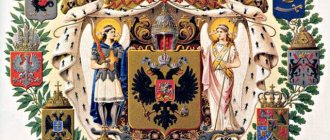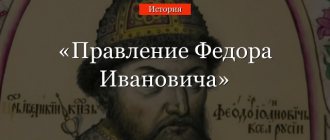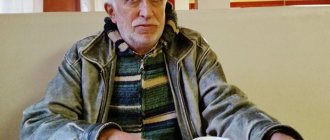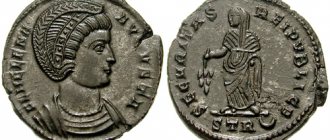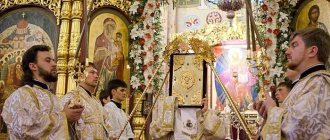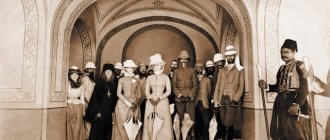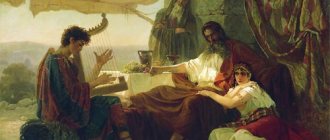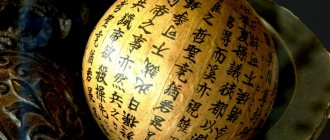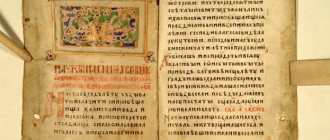Nicholas II - Emperor of All Russia, Tsar of Poland and Grand Duke of Finland. He is the last Russian emperor from the Romanov dynasty.
In the biography of Nicholas 2, an event unthinkable at that time occurred: he abdicated the throne during the February Revolution of 1917. He was shot by his family in 1918. He was canonized (along with his wife and children) by the Russian Orthodox Church as a passion-bearer on August 20, 2000.
The biography of Nicholas 2 is also interesting because it was during his reign that the history of Russia was divided into two periods: before the revolution (tsarist) and after the revolution (Soviet).
So, here is a short biography of Nicholas 2 .
Nicholas II
Nicholas II Alexandrovich Romanov was born on May 6 (18), 1868. His father was the All-Russian Emperor Alexander III, who ruled the state for 13 years. Nicholas's mother, Maria Feodorovna, was the daughter of the Danish king Christian IX.
Nicholas II was the eldest son, which means that in the future it was he who would lead a huge empire.
Childhood and youth
From an early age, Nicholas II and his brothers were raised by the Englishman Karl Heath. Thanks to this, the future emperor was fluent in English and was trained in various sciences.
Grand Duke Nikolai Alexandrovich at the age of 3
Alexander III made a lot of efforts to raise his children in the best possible way. And although he did not forbid his sons to play games, he did not allow laziness in learning.
When Nicholas II turned 8 years old, he began receiving a gymnasium education. However, the child was not so much interested in science as in military affairs.
Already at the age of five, the future emperor studied military tactics, law and geography with interest. The Emperor was not against little Kolya’s hobby. On the contrary, he invited the best specialists of his time to train his son.
When Nicholas II received his gymnasium education, which lasted 8 years, he perfectly mastered French, English, Danish and German. After this, the young man continued to gain the knowledge necessary to manage a huge state.
When Nicholas II turned 16 years old, he solemnly took the oath in the Winter Palace, after which he was accepted into military service. After 3 years, he rose to the rank of colonel.
According to contemporaries, young Nicholas loved military affairs so much that for the sake of this he was ready to endure any difficulties associated with military service.
Tsarevich Nikolai Alexandrovich, 1889
At the age of 21, Nicholas II began attending meetings of the State Council and the Cabinet of Ministers. The father shared his experience with him and did everything possible to help his son become a good sovereign.
Soon, Alexander III visited many Russian cities with Nicholas, and also visited a number of European and Asian countries with him. These trips left many positive emotions in the Tsarevich’s soul.
Childhood, early years
When Nikolai Alexandrovich turned 8 years old, his home education began. The program included a general education course lasting eight years. And then - a course of higher sciences lasting five years. It was based on the classical gymnasium program. But instead of Greek and Latin, the future king mastered botany, mineralogy, anatomy, zoology and physiology. The courses in Russian literature, history and foreign languages were expanded. In addition, the higher education program included the study of law, political economy and military affairs (strategy, jurisprudence, General Staff service, geography). Nicholas 2 was also involved in fencing, vaulting, music, and drawing. Alexander 3 and his wife Maria Fedorovna themselves chose mentors and teachers for the future tsar. Among them were military and government officials, scientists: N. K. Bunge, K. P. Pobedonostsev, N. N. Obruchev, M. I. Dragomirov, N. K. Girs, A. R. Drenteln.
Emperor Nicholas II
In 1894, Emperor Alexander III died suddenly, as a result of which his eldest son Nicholas II ascended to the Russian throne.
2 years later, the coronation of the young emperor took place, which took place on the notorious Khodynka field. The emperor, wanting to win over the people, decided to give each person a souvenir, inside of which there was an enamel mug and various sweets.
As a result, people began to crowd each other, fearing not to receive a gift. According to historians, more than 1,300 people died in this stampede.
The incident frightened Nicholas II so much that he wanted to cancel the ceremonial coronation, but then changed his mind. Most historians are inclined to believe that it was the Khodynka tragedy that became the starting point in the creation of a movement against autocracy in the state.
Subsequent events
Strikes continued, unrest began on the outskirts, in universities, seminaries, and in the navy. Sponsorship came from Japan and England. More than 2 million people were already on strike in October.
On October 30, Nicholas II signed a manifesto, which, among other things, stated:
- Granting civil liberties to the population.
- Inviolability of person, speech and assembly.
- The inability to use force against the people without the approval of the State Duma.
- The opportunity for representatives of the people to participate in monitoring the legality of government actions.
- Political prisoners (except terrorists) were amnestied and censorship was abolished.
In 1906, the Basic State Laws were approved. These 2 documents marked the end of autocracy as the unlimited power of the monarch.
Reign of Nicholas 2
In the first years of his reign, Nicholas II carried out a monetary reform, as a result of which a gold standard for the ruble appeared in the country. The outstanding statesman Sergei Witte had a direct connection to this reform.
Every year the Russian Empire developed and prospered more and more. The famous “Stolypin” reforms related to the agricultural sector were carried out.
New laws were adopted in the fields of education, taxes, insurance and agriculture. By his decree, Nicholas 2 canceled the exile to Siberia, where many criminals or dissidents were sent.
Along with this, the country set a course for industrialization, coal and oil production. During the reign of Nicholas 2, more than 70,000 km of railway were built in Russia.
Domestic and foreign policies
In general, the domestic policy of Nicholas II was not a failure. It can even be called quite dynamic and effective. The following positive changes took place under the monarch:
- The rate of industrial production increased 5 times, outstripping the growth rate of many developed countries.
- The average per capita income of families has doubled on average, and the wages of industrial workers have increased especially strongly.
- A gold currency was introduced, which had a positive effect on the economy of the empire.
- The Great Siberian Railway was completed; in addition to it, more than 2 thousand railways were built per year.
- The highest military command was centralized: field troops were strengthened, the number of army corps was increased, new machine-gun detachments were created in the aviation, and the fleet was transformed. Unfortunately, these reforms were carried out only in 1909-1912, after the devastating war with Japan.
- Expenditures on education were increased 8 times, which ultimately led not only to the spread of literacy, but also revolutionary ideas.
External activities were also fruitful. In 1898, he initiated the signing of a peace agreement; the Hague Peace Conferences were held in 1899 and 1907 and the first court was established in The Hague. In 1907, an agreement was signed with England on the delimitation of spheres of influence in Persia, Afghanistan and China. The formation of the Entente or the Union of 3 powers took place.
Abdication
During the second stage of his reign, Nicholas II faced problems both inside and outside Russia.
The emperor’s main economic goal was the Far Eastern direction, but he was prevented from developing the Far East by Japan, which in 1904, without warning, attacked Russian ships in Port Arthur.
As a result, the Russian-Japanese War began, which ended for Russia with the defeat and surrender of the southern lands of Sakhalin and the Liaodong Peninsula.
The war largely undermined the authority of Nicholas II, and therefore revolutionary sentiments began to appear in the state.
In addition, the people were dissatisfied with their sovereign due to the fact that he had close ties with Grigory Rasputin. The latter was called a charlatan and a deceiver. Rasputin somehow managed to gain the trust of the royal family and become a real eminence grise.
The authority of Nicholas II was further undermined by the First World War (1914-1918). And although he did everything possible to avoid participating in the conflict, all his attempts were in vain.
When Germany opposed Russia, Nicholas II was forced to get involved in the war. He personally commanded the Russian troops and repeatedly went to the front.
Many serious military miscalculations aggravated not only the personal situation of Nicholas II, but also the Russian Empire in general. The Russian people blamed the tsar and his entourage for all the failures and defeats.
At the end of February 1917, uprisings began in Petrograd (read more about this in a brief history of the USSR). People demanded the resignation of the current government. Nicholas II wanted to suppress the unrest by force, but the military refused to carry out orders.
Photograph of Nikolai Romanov, taken after his abdication in 1917 in Tsarskoe Selo
Then those close to the sovereign clearly explained to him that abdication of the throne was the only way to calm the people.
A few days later, Emperor Nicholas II announced his abdication of the throne in favor of his brother, Prince Mikhail Alexandrovich. However, he refused to ascend to the throne. In this regard, the Romanov dynasty came to its end.
First revolution
In 1904-1905, the Russo-Japanese War took place, which ended in the defeat of Russia. The first loss in half a century led to a sharp drop in the popularity of Nicholas II, unrest began, and rumors spread about the harmful influence of Rasputin.
The Emperor was forced to make concessions to the liberals: he appointed the liberal Svyatopolk-Mirsky to the post of Minister of Internal Affairs (instead of Witte, who was killed by the Socialist Revolutionaries), passed a decree to the Senate on expanding the rights of zemstvos, abolishing censorship, emancipation of foreigners and non-religious people, and insurance of workers.
January 22, 1905 went down in Russian history as “Bloody Sunday.” On this day, priest Georgy Gapon led a procession of workers to the Winter Palace who wanted to present Emperor Nicholas II with a Petition on Workers' Needs with economic and political demands, including the demand for the introduction of representatives of the people into the Constituent Assembly . The march ended with the government refusing to support the workers, a mass strike (more than 150 thousand people came to the square) and the gathering of soldiers in St. Petersburg. Due to the impossibility of dispersing the people by force, shooting began, which only angered the protesters even more.
According to various sources, 130-200 people were killed that day, and from 300 to 800 were injured. It is noteworthy that most of the speakers were pro-monarchy; after the dispersal, radical sentiments increased sharply. The sovereign himself was not in the palace at all: 3 days before this day he left for Tsarskoe Selo. “Bloody Sunday” was the beginning of the First Russian Revolution.
Personal life of Nicholas II
In 1889, Nicholas II met the German princess Alice of Hesse-Darmstadt, who came to Russia. The future emperor fell in love with a beautiful German woman and asked his father's permission to marry her.
Despite the fact that his parents were against Nicholas’ marriage to Alice, the Tsarevich did not back down.
Grand Duchess Elizaveta Feodorovna, who was Alice’s sister, helped resolve the situation. She organized a secret correspondence, thanks to which the young people confessed their mutual feelings to each other.
After 5 years, Nicholas II again asked his father to give his consent to the marriage. This time, Alexander III allowed him to marry a German princess, who, after anointing, began to be called Grand Duchess Alexandra Fedorovna.
In 1894, Nicholas and Alexandra legalized their relationship, and 2 years later they were proclaimed rulers of the state. In this marriage they had 4 daughters (Anastasia, Maria, Tatyana and Olga) and a son, Alexey.
Emperor Nicholas II and his wife Alexandra Feodorovna, 1896
Tsarevich Alexei suffered from hemophilia, a disease in which a person’s blood is unable to clot. Doctors said that he would not live to see 20 years of age, so succession to the throne was out of the question.
For Nicholas II and Alexandra Fedorovna, this was a real shock. In this regard, they had high hopes for Grigory Rasputin, a simple village man, who, taking a child screaming during attacks, somehow miraculously calmed him down.
Biographers of Nicholas II agree that for the last Russian emperor, family has always been of great importance. He spent a lot of time with his wife and children and cared for them tenderly. All this is reflected in the letters of Nicholas II.
As for the habits and hobbies of Nicholas II, he loved hunting, horse riding, skating and playing hockey.
Nicholas 2 and George 5
An interesting fact is that Russian Emperor Nicholas 2 and English King George 5 were very similar in appearance to each other.
This is not surprising, because they were cousins on their mother’s side: George’s mother Alexandra and Nicholas’s mother Dagmar were the daughters of King Christian IX of Denmark.
Below you can see a photo of Nikolai and Georg:
Nicholas 2 (left) and George 5 (right)
They say that when they were still children, they looked alike, like twins. When they met, Nicholas 2 and George 5 loved to dress up and fool their servants (this was possible because Nicholas was fluent in English).
Carier start
From childhood, the future Emperor Nicholas 2 was interested in military affairs: he perfectly knew the military regulations and traditions of the officer environment, the soldier did not shy away, recognizing himself as their mentor-patron, and easily endured the inconveniences of army life during camp maneuvers and training camps.
Immediately after the birth of the future sovereign, he was enrolled in several guards regiments and made commander of the 65th Moscow Infantry Regiment. At the age of five, Nicholas 2 (reign date: 1894-1917) was appointed commander of the Life Guards of the Reserve Infantry Regiment, and a little later, in 1875, of the Erivan Regiment. The future sovereign received his first military rank (ensign) in December 1875, and in 1880 he was promoted to second lieutenant, and four years later to lieutenant.
Nicholas 2 entered active military service in 1884, and starting in July 1887 he served in the Preobrazhensky Regiment and reached the rank of staff captain. He became a captain in 1891, and a year later a colonel.


